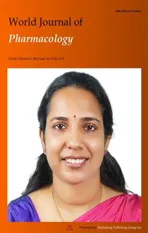Botanical,chemical,and pharmacological characteristics of Lomatogonium rotatum:A review
2022-11-02LiLiDaiRongGuiEniMingHaiFuGenNaBa
Li-Li Dai,Rong-Gui Eni,Ming-Hai Fu,Gen-Na Ba
Li-Li Dai,Ming-Hai Fu,Gen-Na Ba,School of Mongolian Medicine,Inner Mongolia Minzu University,Tongliao 028000,Inner Mongolia Autonomous Region,China
Rong-Gui Eni,NMPA Key Laboratory of Quality Control of Traditional Chinese Medicine (Mongolian Medicine),Inner Mongolia Minzu University,Tongliao 028000,Inner Mongolia Autonomous Region,China
Abstract Lomatogonium rotatum (L.rotatum) Fries ex Nym,a dry whole grass belonging to the family Gentianaceae,is widely used to treat liver diseases in Mongolian medicine.In Mongolian medicine,L.rotatum Fries ex Nym,also known as Digeda,is a rare medicinal herb with low yield and widespread clinical use.Currently,it is included in over 25 traditional Mongolian medicine prescriptions that help reduce heat,dispel xieri,enhance stomach function,and heal wounds.Recent studies have shown that L.rotatum Fries ex Nym contains a variety of metabolites,including flavonoids,xanthone compounds,terpenoids,organic acids,steroids,and alkaloids.In addition,its anti-hepatitis B,anti-inflammatory,anti-acute liver injury,and anti-obesity effects have been proven by pharmacological studies.In this review,we summarize the ecological resources,traditional pharmacodynamics,chemical constituents,and pharmacological actions of L.rotatum Fries ex Nym,with an aim to provide a theoretical basis for future applied research and new product development.
Key Words: Mongolian medicine; Lomatogonium rotatum; Chemical composition; Pharmacological action; Research progress
INTRODUCTION
Lomatogonium rotatum(L.rotatum) Fries ex Nym is a dry whole grass belonging to the family Gentianaceae.L.rotatumFries ex Nym,also known asHabirigen-DigedaorTemuri-Digeda,is a commonly used Mongolian medicine to treat liver diseases.In traditional Mongolian medicine,L.rotatumFries ex Nym is believed to clear heat,removexieri,strengthen the stomach,treat poisoning,and heal wounds.It is widely used to prevent and treat influenza and fever,hepatobiliary disease,typhoid fever,and jaundice.It also has a therapeutic effect on heatstroke symptoms[1,2].In addition,it is clinically effective in the prevention and treatment of liver and gallbladder diseases.Recent chemical and pharmacological studies have shown thatL.rotatumFries ex Nym contains organic compounds (xanthones),swertiamarin,oleanolic acid,luteolin,and other metabolites that play a role in enhancing the liver and biliary tract functions[3].
MORPHOLOGY,RESOURCES,AND BREEDING
Floral morphology of L.rotatum Fries ex Nym
L.rotatumFries ex Nym is a 30- to 50-cm-high annual herb with an erect stem,four prisms,and a few branches.The leaves are sessile and opposite,and the leaf blades are narrowly lanceolate,1.5 to 3 cm long,0.4 to 0.6 cm wide,and apically acute,with a wider base.It has five calyces,deep,lanceolate lobes,and an equally long corolla.The corolla has five deeply lobed segments; the lobes are spheric and obtuse,with a toothed tube on each side of the base (Figure 1).The plant usually grows on hillsides and wetlands at an altitude of 2500 m.After picking the grass in the autumn flowering season,adherent soil and moisture are removed,and it is mashed or sun-dried before use.
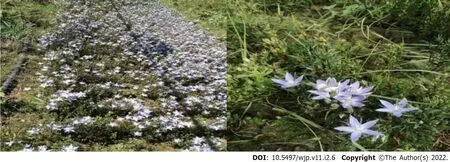
Figure 1 The whole plant of Lomatogonium rotatum.
Resources and geographical distribution of L.rotatum Fries ex Nym
L.rotatumFries ex Nym for medicinal use primarily grows in the wild.However,the yield is low because of environmental factors and excessive mining,necessitating artificial breeding,which also has a low yield.A survey found wildL.rotatumFries ex Nym in Xilingol League,Horqin,and Hulun Buir of the Inner Mongolia Autonomous Region,but observed a decreasing growth trend year on year[4].The shortage ofL.rotatumFries ex Nym has led to the use ofViola yedoensisMakino of the family Violaceae as a substitute medicine in most Mongolian hospitals.It is,therefore,crucial to immediately protect and direct increasing efforts toward improving resources required for growingL.rotatumFries ex Nym.Currently,several challenges,such as the low germination rate of group embryos and the low success rate of inoculation,which affect the large-scale cultivation ofL.rotatumFries ex Nym,continue to persist in artificial cultivation and domestication of the plant[4].Li[4] conducted a field investigation and found that the plant shows optimum growth during the dry season in February,with an average temperature of -13 to 18 °C and precipitation of 6-19 mm.The vegetation growth types include temperate grasses,mixed grasses meadow,halophytic meadow,temperate deciduous shrub,and broad-leaved forest[5].According to the literature,L.rotatumFries ex Nym is widely distributed in Inner Mongolia,Gansu,Yunnan,Xinjiang,Qinghai,Tibet,Sichuan,and other regions[6],usually on grassy slopes of hillsides and shrublands below an altitude of 4200 m[7].Li[4] pointed out thatL.rotatumFries ex Nym is scattered in shrublands,alpine meadows,grassland wetlands,flat meadow grasslands associated with rivers,and alpine and hillside meadows in Xilingol,Inner Mongolia,Heilongjiang,Hebei,and other regions[4].
Characteristics of breeding and pollen viability of L.rotatum Fries ex Nym
Liet al[7] set up fixed points in the field to monitor the morphology and characteristics ofL.rotatumFries ex Nym organs,dynamics during flowering,and types of pollinators.A systematic inspection and measurement of its growth and reproduction were conducted by calculating pollen viability,pollinable characteristics such as stigma,estimation of pollen-to-ovule ratio,and hybridization index,and artificially controlled pollination[7].The results demonstrated that the flowering time of a singleL.rotatumFries ex Nym flower was 6-7 d and that the flowering time of a single plant could be classified into a common bud stage followed by the initial flowering,blooming,wilt,and litter periods.During this process,the open stigma was always higher than the anther,and the pollen vitality and stigma receptivity were relatively strong at 2-3 d after anthesis.In addition,the researchers also observed that the breeding system was mainly outcrossing,and some were self-compatible,which may require insect thrips as the primary pollinators.In the case of bagging without pollination after emasculation,the seed setting rate of the fruit was 0,indicating a lack of fusion reproduction[8].Zhuet al[9] investigated the effects of different storage times and temperatures and the use of gibberellin reagents in promoting the flowering and growth rates ofL.rotatumFries ex Nym seeds.They found that changes in outdoor temperature and gibberellin immersion significantly promoted the germination and flowering ofL.rotatumFries ex Nym seeds[9].
Similarly,Liet al[10] intervened in theL.rotatumFries ex Nym germination rate by adopting different temperatures and germination sites.They found that the highest germination index was on sand,under which condition the rot rate of the seeds was the lowest.Furthermore,the germination rate was highest at 40 °C.Therefore,the optimal conditions forL.rotatumFries ex Nym seed germination may be the temperature of 40 °C and planting on sand[10].
TRADITIONAL APPLICATIONS
L.rotatumFries ex Nym is a typical medicinal plant used for internal applications to prevent and treat various liver and gallbladder diseases.In 1998,it was recorded in the Drug Standard (Mongolian Medicine Volume) of the Ministry of Health.The plant helps degradexieriand clears heat.In Mongolian medicinal prescriptions,L.rotatumFries ex Nym is either combined withHerpetospermum caudigerumWall andIxeris Chinensis(Thunb.) Nakai to formulate a Lidan powder containing 28 medicinal herbs,or it is used alone to degrade thexieriheat of the gallbladder.In addition,it is used as a prescription combination of Digeda-15,Digeda-20,and Digeda-25 to treat common clinical diseases such as liver and gallbladder heat,redness,yellow appearance of the eye and skin,gallbladder stasis,and stasis ofxieri,which may lead to organ injury[11].In addition,Digeda-4,a combination ofL.rotatumFries ex Nym andCoptidis rhizoma,Gardenia jasminoidesEllis,andDianthus superbusL.,is used to reduce problems such as inflammation,sore throat,liver and gallbladder heat,blood heat,thirst,and irritability[2].Furthermore,L.rotatumFries ex Nym is used as an adjuvant,subordinate,or auxiliary medicine in several compound preparations.There are a total of 24 Mongolian medicine prescriptions that includeL.rotatumFries ex Nym,including three whereL.rotatumFries ex Nym is used as a monarch medicine,four whereL.rotatumFries ex Nym is used as a minister medicine,16 as assistant medicines,and one as a guide medicine.
CHEMICAL COMPOSITION
Research on the pharmacodynamic substances and chemical components ofL.rotatumFries ex Nym is still in the initial stages.To date,38 compounds have been isolated and identified,mainly including flavonoids and xanthones,with a small number of iridoids,alkaloids,steroids,organic acids,amongst others.
Flavonoids
Flavonoids are abundant in most herbaceous plants,especially in higher plants,and possess a plethora of biological activities.According to the literature,L.rotatumFries ex Nym contains about 16 flavonoids,including luteolin[12],apigenin,5,7,3',4',5'-pentahydroxy flavonoids,quercetin,kaempferol,luteolin-7-O-glucoside,apigenin-7-O-glucoside[13],swertisin[14],swertianolin[15],isoorientin,mangiferin,isovitexin[16],carinoside A[17],carinoside B,carinoside C,and carinoside D[18] (Table 1 and Figure 2).
Xanthones
Ten xanthone compounds have been identified inL.rotatumFries ex Nym: 6,8-dihydroxy-1,2-dimethoxy xanthone[19],1,8-dihydroxy-3,4,5-trimethoxyxanthone,1-hydroxy-3,7,8-trimethoxy xanthone,8-hydroxy-1,3,5-trimethyl xanthone,1-hydroxy-3,5,8-trimethoxy xanthone[13],1,8-dihydroxy-4,5-dimethoxy-6,7-methylenedioxy xanthone,5-O-D-gluco-pyranosyl-1,3,8-trihydroxy-5,6,7,8-tetrahydroxanthone,1,3,5,8-tetrahydroxy-5,6,7,8-tetrah-ydroxanthone[20],1,2,6-trihydroxyl xanthone-8-O-β-Dglucoside,and 1,4,8-trimethoxyxanthone--6-O-β-D-glucoronyl-(1→6)O-β-D-glucoside[21] (Table 1 and Figure 2).
Terpenoids
Terpenoids are a class of compounds derived from methylcarboxylic acid with ≥ 2 isoprene units in the basic carbon frame.According to the literature,three iridoids (i.e.,swertiamarin[22-25],ursolic acid 3βhydroxy-ursol-11,12-ene-28,13β-lactone[14],and amarogentin[16,26]),as well as two pentacyclic triterpenes,oleanolic acid[20],2a-hydroxyoleanolic acid[13],lomacarinoside A,and lomacarinoside B[27] are present inL.rotatumFries ex Nym (Table 1 and Figure 2).
Other compounds
L.rotatumFries ex Nym also contains organic acids,steroids[14],alkaloids[28,29],and other compounds (erythrocentaurin),in addition to the above-mentioned metabolites[13].However,current research on this aspect is inadequate,warranting further studies (Table 1 and Figure 2).
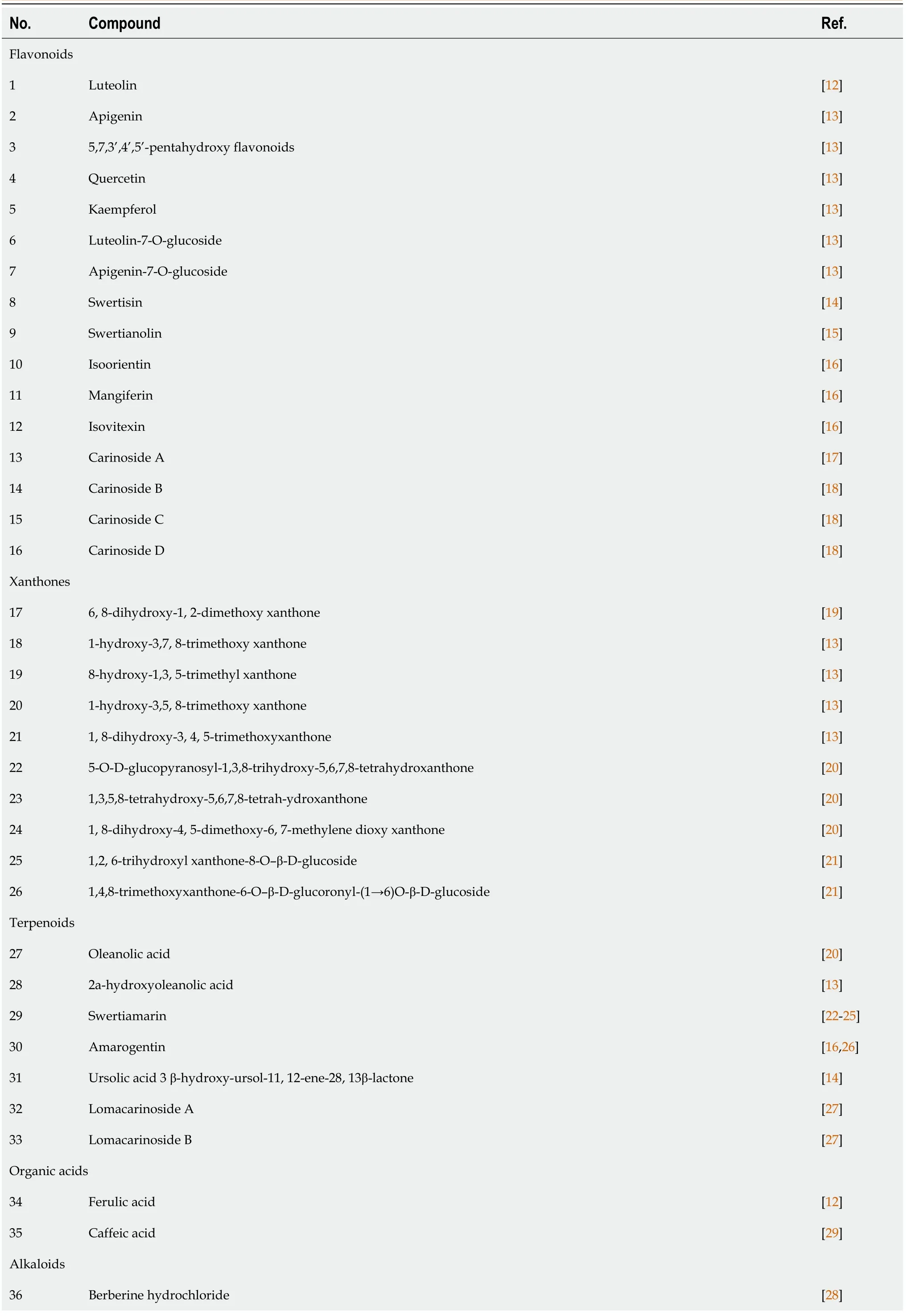
Table 1 Chemical composition of Lomatogonium rotatum

Steroid 37 Daucosterol [14]Other 38 Erythrocentaurin [13]
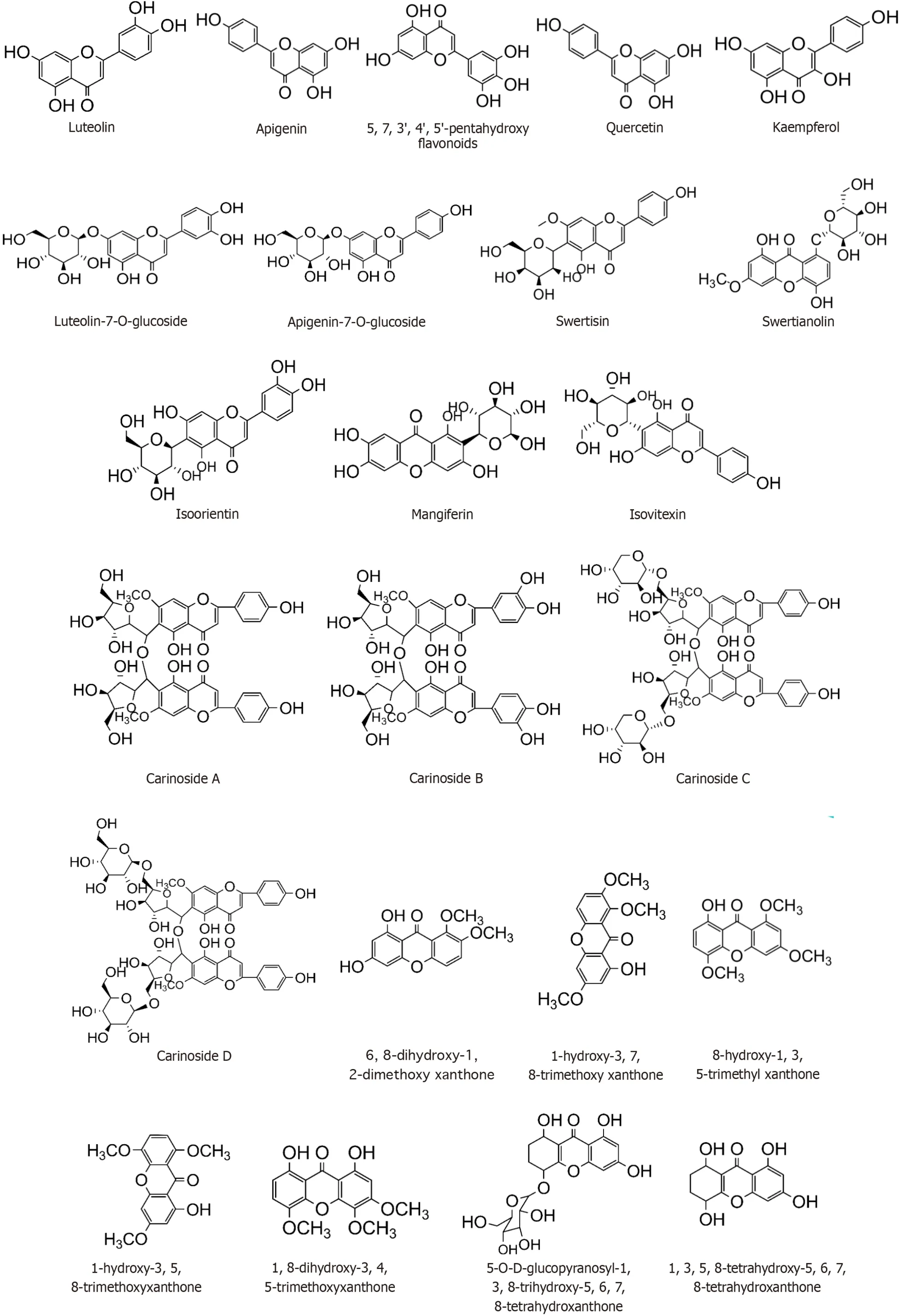
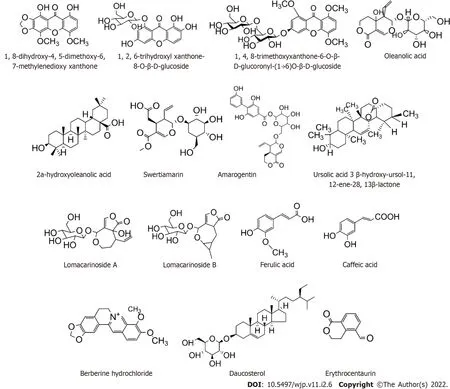
Figure 2 Structure of compounds 1-38 from Lomatogonium rotatum.
Study on extraction process of L.rotatum Fries ex Nym
Chenet al[30] investigated the primary factors affecting total flavonoid extraction inL.rotatumFries ex Nym using single-factor experiments.They then optimized the extraction method for the total flavonoids inL.rotatumFries ex Nym by an orthogonal test using the rutin concentration as the standard and formulated the optimal extraction process for the total flavonoids.The results demonstrated that the optimal parameters for total flavonoid extraction fromL.rotatumFries ex Nym were: Ethanol concentration,60%; solvent volume,150 mL; extraction time,8 h; total flavonoid extraction rate fromL.rotatumFries ex Nym,about 3.47%.
In addition,single-factor experiments were conducted to explore the effects of the ethanol percentage and volume used for extraction,the ultrasonic extraction time,and the liquid-to-sample ratio on the total saponin concentration extracted fromL.rotatumFries ex Nym.Response surface methodology was used to optimize the experimental conditions for ultrasonic extraction ofL.rotatumFries ex Nym,resulting in a gradual increase in the total saponin extraction yield.The experimental results demonstrated that the optimal experimental conditions for the extraction of total saponins fromL.rotatumFries ex Nym were as follows: Average volume content fraction of ethanol,77%; average liquidto-solid ratio,40 mL/g; ultrasound duration,33 min.Under these conditions,the researchers found that the average total saponin concentration extracted fromL.rotatumFries ex Nym was 27.36 mg/g,which was close to the theoretically predicted value[31].However,the optimization of the extraction process,using 65% ethanol,a solid-to-liquid ratio of 20 mL/g,and an extraction time of 20 min,defined by Liuet al[32]’s study,is considered the best method[32].
Fingerprint and mineral elements of L.rotatum Fries ex Nym
Sunet al[33] used high-performance liquid chromatography to determine the fingerprint ofL.rotatumFries ex Nym plants from 15 different places and cultivation areas.The results showed 15 common peaks,of which the five most common were swertiamarin,isoorientin,swertisin,apigenin,and luteolin.In addition,Yuanet al[34] measured the mineral elements in twoLomatogoniumspecies using inductively coupled plasma-optical emission spectrometry,finding 21 mineral elements inLomatogonium macranthumand 18 elements inLomatogonium carinthiacum.BothLomatogoniumspecies had relatively high Ca,Mg,and Fe contents while the greatest difference was seen in the Co concentrations and the least difference was found in the Ti contents[34].
PHARMACOLOGICAL ACTION OF L.ROTATUM FRIES EX NYM
Effects of L.rotatum Fries ex Nym powder on hepatitis B
Baiet al[35] investigated the anti-hepatitis B effect ofL.rotatumFries ex Nym powder and found thatL.rotatumFries ex Nym had a relatively low cytotoxicity to HepG2 cells,with some inhibitory effect on the number of hepatitis B virus (HBV) DNA copies in the cells.In addition,in vitroexperiments showed thatL.rotatumFries ex Nym is able to counteract HBV to some degree.This may be becauseL.rotatumFries ex Nym acts against HBV by directly inducing apoptosis,thereby blocking HBV replication in HepG 2 cells.
Anti-inflammatory effects of L.rotatum Fries ex Nym
Ethyl acetate has been found to be the active component responsible for the anti-inflammatory effect ofL.rotatumFries ex Nym,which has significant antibacterial activity against both Gram-positive and -negative bacteria such asEscherichia coli,Staphylococcus alba,drug-resistantStaphylococcus aureus,S.aureus,andPseudomonas aeruginosa[36].L.rotatumFries ex Nym also contains several anti-inflammatory compounds,including sweroside,swertiamarin,and luteolin.Chenet al[37] reported that swertiamarin had anti-inflammatory,antioxidant,and anti-fibrotic effects in rats with smoking-exposed prostate dysfunction[37].Azizet al[38] also reported that luteolin had strong anti-inflammatory effects in bothin vivoandin vitroexperiments[38].
Anti-acute liver injury effect
L.rotatumFries ex Nym extracts with different polarities were reported to have pharmacological effects on acute liver injury[39].In a drug interaction study ofL.rotatumFries ex Nym prescription medication,anL.rotatumFries ex Nym water extract was found to significantly protect liver function in rats with carbon tetrachloride (CCl4)-induced liver astrocyte damage[40].In a further study,the urine of rats with liver injury was analyzed afterL.rotatumFries ex Nym administration,showing 19 common peaks,one of which was the drug itself,14 were metabolites passed through the body,and the rest were endogenous components of urine[41].In addition,the study found that the Digeda-4 decoction had a protective action in mice with pyloric ligation-induced liver injury.It has been suggested thatL.rotatumFries ex Nym may affect the protein expression of MRP3 and MRP4 by regulating the nuclear receptors CAR and PXR,resulting in liver protection[42].An experimental metabolomics study found thatL.rotatumFries ex Nym administration restored several disturbed metabolic pathways,including those involving linoleic acid and glycerolipid metabolism.The use of another eight metabolites as potential biomarkers was proposed to help clarify the liver protective mechanism ofL.rotatumFries ex Nym[43].Zhaoet al[44] also proposed that the liver protective activity ofL.rotatumFries ex Nym may be related to metabolites in rat plasma and liver[44].
Anti-obesity effect
Baoet al[45] investigated the effect ofL.rotatumFries ex Nym on weight loss based on the function of bitter receptors in rats with obesity induced by a high-fat and high-energy diet.TheL.rotatumFries ex Nym extract significantly reduced body weight,Lee’s index,epididymal fat,perirenal fat,and mesenteric fat deposition in the rats.It also reduced serum triglyceride and total cholesterol levels to a certain extent,indicating its potential for lipid-lowering,cholesterol-lowering,and weight-loss effects.Chemical analysis demonstrated that flavonoids,glycosides,and alkaloids were the primary components ofL.rotatumFries ex Nym,and the main source of bitterness was base substances.The effects ofL.rotatumFries ex Nym on fat metabolism and its bitter receptor activation mechanism require further investigation[46].
CONCLUSION
As a highly distinctive Mongolian medicinal herb,L.rotatumFries ex Nym is traditionally used to prevent and treat liver and gallbladder diseases.However,its clinical application value and further development are limited by the strict requirements of its growing conditions,high demand for medicinal materials,decrease in natural resources,and insufficient scientific and technological expertise in ethnic minority areas.To date,a total of 38 compounds have been isolated and identified fromL.rotatumFries ex Nym,with flavonoids,xanthones,and terpenoids being the main metabolites.While pharmacological studies onL.rotatumFries ex Nym have mainly focused on hepatitis,liver injury,and weight loss,the mechanisms of its pharmacological activity remain elusive and further comprehensivein vivoandin vivoexperimental studies are necessary.Thus,our study may provide a foundation for further research onL.rotatumFries ex Nym and its clinical applications.
FOOTNOTES
Author contributions:Dai LL and Eni RG performed the data collection and wrote the manuscript; Fu MH and Ba GN wrote and reviewed the manuscript.
Supported byNational Natural Science Foundation of China,No.81803845; Natural Science Foundation of Inner Mongolia Autonomous Region,No.2018MS08040; Construction Project of "Inner Mongolia Autonomous Region Mongolian Medicine and Food Source Protection and Utilization Innovation Team",No.190301; and Graduate Research Project of Inner Mongolia Minzu University,No.NMDBS1901.
Conflict-of-interest statement:All the authors report no relevant conflicts of interest for this article.
Open-Access:This article is an open-access article that was selected by an in-house editor and fully peer-reviewed by external reviewers.It is distributed in accordance with the Creative Commons Attribution NonCommercial (CC BYNC 4.0) license,which permits others to distribute,remix,adapt,build upon this work non-commercially,and license their derivative works on different terms,provided the original work is properly cited and the use is noncommercial.See: https://creativecommons.org/Licenses/by-nc/4.0/
Country/Territory of origin:China
ORCID number: Li-Li Dai 0000- 0003-4821-596X; Rong-Gui Eni 0000-0003-2481-3009; Ming-Hai Fu 0000-0002-5096-8744; Gen-Na Ba 0000-0002-0834-3863.
S-Editor: Fan JR
L-Editor:Wang TQ
P-Editor: Chen YX
